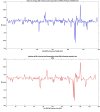Pathogenic perspective of missense mutations of ORF3a protein of SARS-CoV-2
- PMID: 33940003
- PMCID: PMC8086268
- DOI: 10.1016/j.virusres.2021.198441
Pathogenic perspective of missense mutations of ORF3a protein of SARS-CoV-2
Abstract
One of the most important proteins for COVID-19 pathogenesis in SARS-CoV-2 is the ORF3a which is the largest accessory protein among others coded by the SARS-CoV-2 genome. The major roles of the protein include virulence, infectivity, ion channel activity, morphogenesis, and virus release. The coronavirus, SARS-CoV-2 is mutating rapidly, therefore, critical study of mutations in ORF3a is certainly important from the pathogenic perspective. Here, a sum of 175 non-synonymous mutations in the ORF3a of SARS-CoV-2 were identified from 7194 complete genomes of SARS-CoV-2 available from NCBI database. Effects of these mutations on structural stability, and functions of ORF3a were also studied. Broadly, three different classes of mutations, such as neutral, disease, and mixed (neutral and disease) types of mutations were observed. Consecutive phenomena of mutations in ORF3a protein were studied based on the timeline of detection of the mutations. Considering the amino acid compositions of the ORF3a protein, twenty clusters were detected using the K-means clustering method. The present findings on 175 novel mutations of ORF3a proteins will extend our knowledge on ORF3a, a vital accessory protein in SARS-CoV-2, to enlighten the pathogenicity of this life-threatening virus.
Keywords: COVID-19; Genetic variations; Missense mutations; ORF3a; SARS-CoV-2; Shannon entropy.
Copyright © 2021 Elsevier B.V. All rights reserved.
Figures


















Similar articles
-
The importance of accessory protein variants in the pathogenicity of SARS-CoV-2.Arch Biochem Biophys. 2022 Mar 15;717:109124. doi: 10.1016/j.abb.2022.109124. Epub 2022 Jan 24. Arch Biochem Biophys. 2022. PMID: 35085577 Free PMC article.
-
SARS-Cov-2 ORF3a: Mutability and function.Int J Biol Macromol. 2021 Feb 15;170:820-826. doi: 10.1016/j.ijbiomac.2020.12.142. Epub 2021 Jan 8. Int J Biol Macromol. 2021. PMID: 33359807 Free PMC article.
-
Unraveling the impact of ORF3a Q57H mutation on SARS-CoV-2: insights from molecular dynamics.J Biomol Struct Dyn. 2024 Nov;42(18):9753-9766. doi: 10.1080/07391102.2023.2252908. Epub 2023 Aug 30. J Biomol Struct Dyn. 2024. PMID: 37649361
-
A comprehensive review of current insights into the virulence factors of SARS-CoV-2.J Virol. 2025 Feb 25;99(2):e0204924. doi: 10.1128/jvi.02049-24. Epub 2025 Jan 29. J Virol. 2025. PMID: 39878471 Free PMC article. Review.
-
SARS-CoV-2 ORF3a Protein as a Therapeutic Target against COVID-19 and Long-Term Post-Infection Effects.Pathogens. 2024 Jan 14;13(1):75. doi: 10.3390/pathogens13010075. Pathogens. 2024. PMID: 38251382 Free PMC article. Review.
Cited by
-
Prevalence and circulation patterns of SARS-CoV-2 variants in European sewage mirror clinical data of 54 European cities.Water Res. 2022 May 1;214:118162. doi: 10.1016/j.watres.2022.118162. Epub 2022 Feb 5. Water Res. 2022. PMID: 35193077 Free PMC article.
-
Mycophenolic acid treatment drives the emergence of novel SARS-CoV-2 variants.Proc Natl Acad Sci U S A. 2025 Jul 15;122(28):e2500276122. doi: 10.1073/pnas.2500276122. Epub 2025 Jul 9. Proc Natl Acad Sci U S A. 2025. PMID: 40632557 Free PMC article.
-
Computational Analysis Predicts Correlations among Amino Acids in SARS-CoV-2 Proteomes.Biomedicines. 2023 Feb 10;11(2):512. doi: 10.3390/biomedicines11020512. Biomedicines. 2023. PMID: 36831052 Free PMC article.
-
The role of SARS-CoV-2 accessory proteins in immune evasion.Biomed Pharmacother. 2022 Dec;156:113889. doi: 10.1016/j.biopha.2022.113889. Epub 2022 Oct 17. Biomed Pharmacother. 2022. PMID: 36265309 Free PMC article. Review.
-
The role of microRNAs in solving COVID-19 puzzle from infection to therapeutics: A mini-review.Virus Res. 2022 Jan 15;308:198631. doi: 10.1016/j.virusres.2021.198631. Epub 2021 Nov 14. Virus Res. 2022. PMID: 34788642 Free PMC article. Review.
References
-
- Brooks D.J., Fresco J.R., Lesk A.M., Singh M. Evolution of amino acid frequencies in proteins over deep time: inferred order of introduction of amino acids into the genetic code. Mol. Biol. Evolut. 2002;19(10):1645–1655. - PubMed
MeSH terms
Substances
LinkOut - more resources
Full Text Sources
Other Literature Sources
Medical
Miscellaneous

